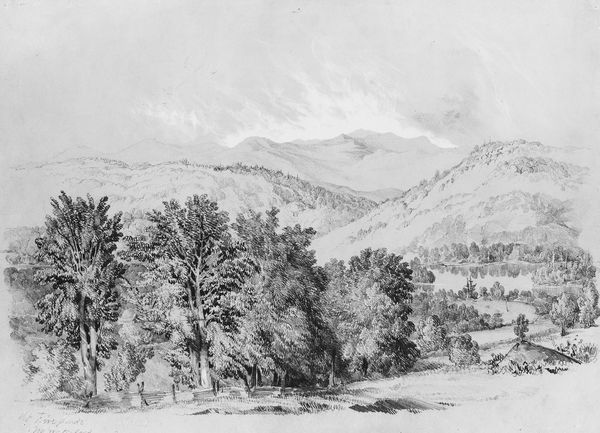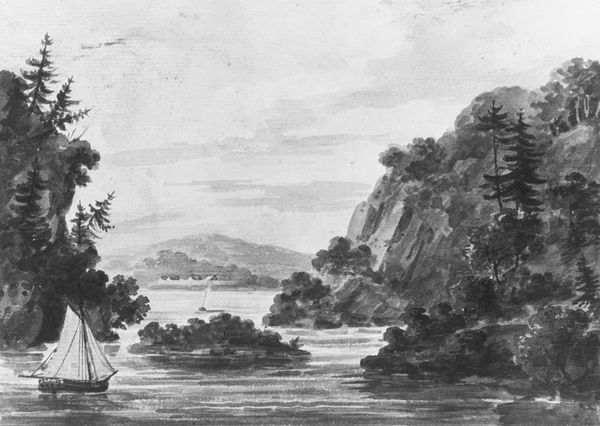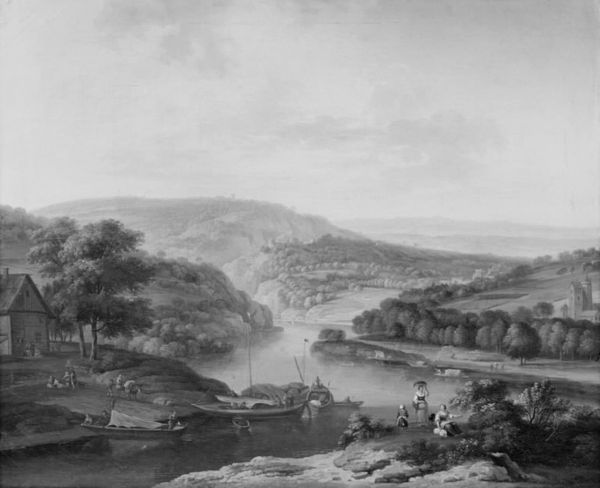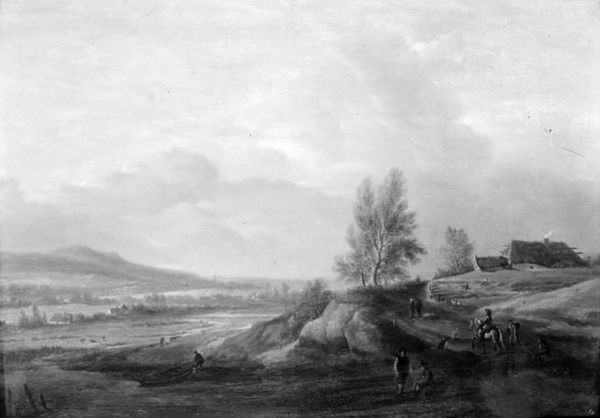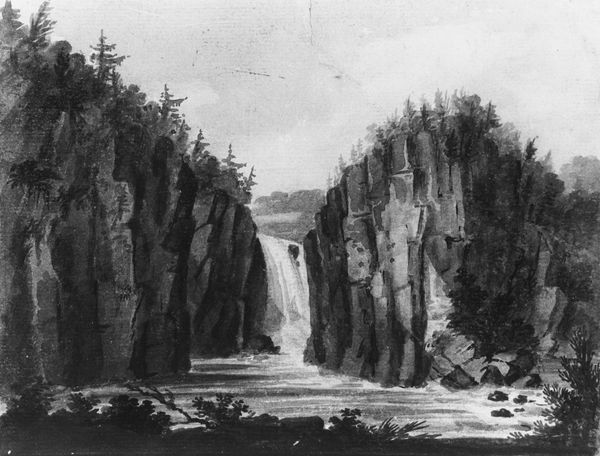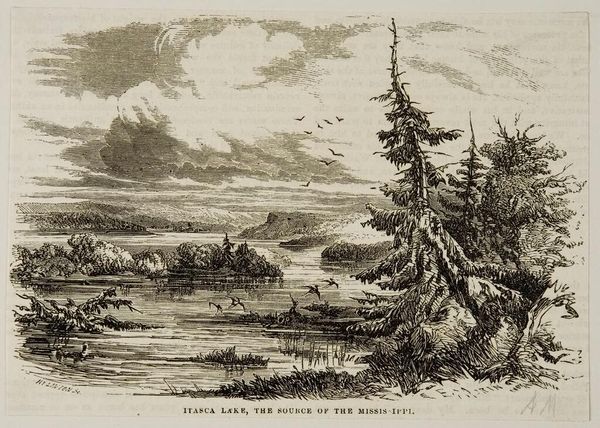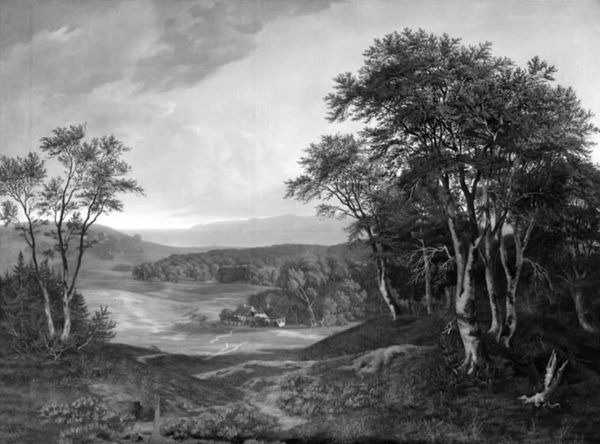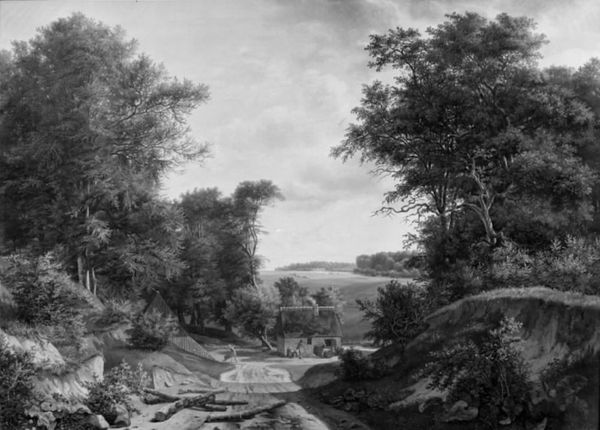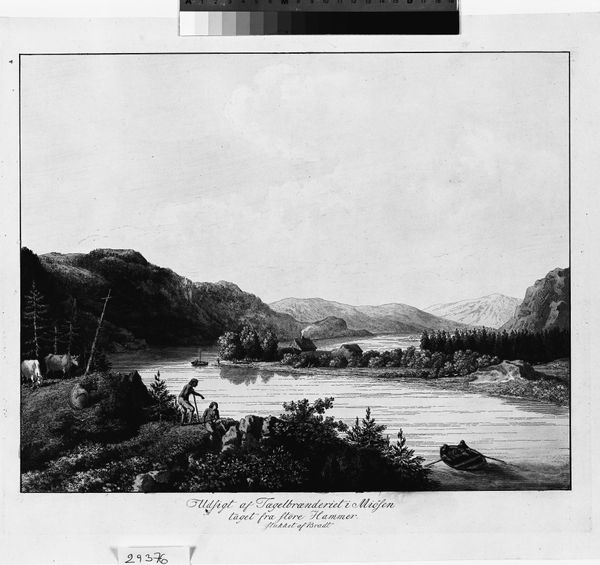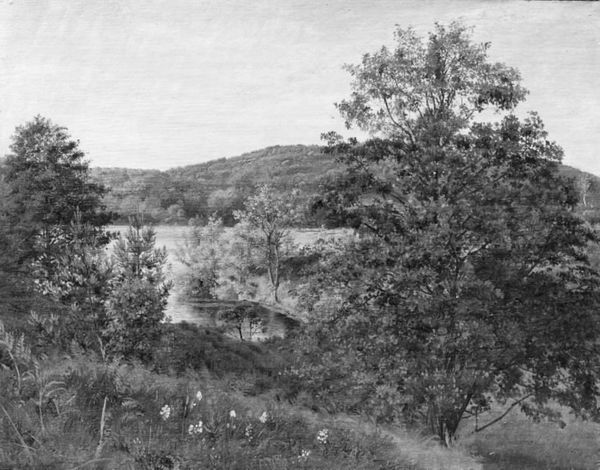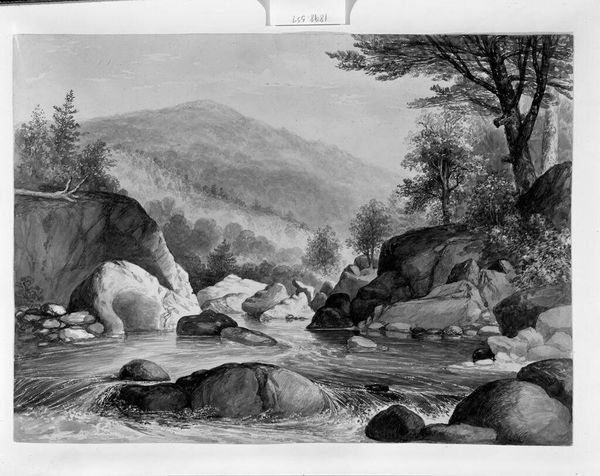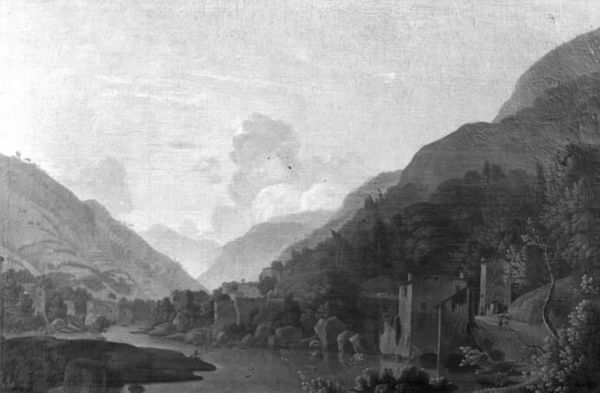
painting, plein-air
#
painting
#
plein-air
#
landscape
#
landscape
#
romanticism
Dimensions: 7 cm (height) x 11.5 cm (width) (Netto)
Curator: Immediately, there's a compelling sense of nature's grandeur, a feeling of immersion and quiet power. The flowing water seems to speak volumes, doesn’t it? Editor: It does. We're looking at "Landscape at Bruflat in Valdres, Norway," created by J.C. Dahl in 1844. Dahl, known for his landscape paintings, captured this en plein air, as evidenced by the fresh spontaneity in the work. Curator: The water really anchors the image. Throughout history, rivers have represented time, change, the journey of life. Here, the rapid current suggests something unstoppable. There are a couple figures too, almost lost in the scenery – humans versus nature. Editor: Absolutely. See how the light falls? The composition guides our eyes: a rough foreground transitioning to a turbulent river with two men along the shores, beyond it all is a mass of vegetation until eventually, in the distance, one sees soft and quiet rolling hills under a vast clouded sky. It is classically Romantic, a calculated arrangement that maximizes drama and the sublime. Curator: Speaking of sublime, notice the mountains in the background? In Norse mythology, mountains were sacred places, homes to gods and spirits. In many cultures mountains symbolize ascension and spiritual insight, hinting at more profound truths. It speaks volumes about our ancestors' reverence for the land. Editor: Yes, but the materiality interests me. You know, its tactile nature. From the swift brushwork that renders the turbulent water to the delicate depiction of sunlight diffused across the mountainside, Dahl skillfully balances the solidity of forms with a feeling of lightness and evanescence, reflecting Romantic ideals but filtered through direct experience. Curator: I find myself considering the cultural memory imbued within a landscape like this, this place must have a deep history. You can imagine stories and experiences interwoven into every element of it: the river, trees, mountains... the painting seems to be a bridge to a forgotten past. Editor: Indeed, it serves to reveal Romanticism, not as a purely aesthetic category, but as an intellectual proposition made via canvas and paint. Thanks for unraveling some of the mystery here today!
Comments
No comments
Be the first to comment and join the conversation on the ultimate creative platform.
